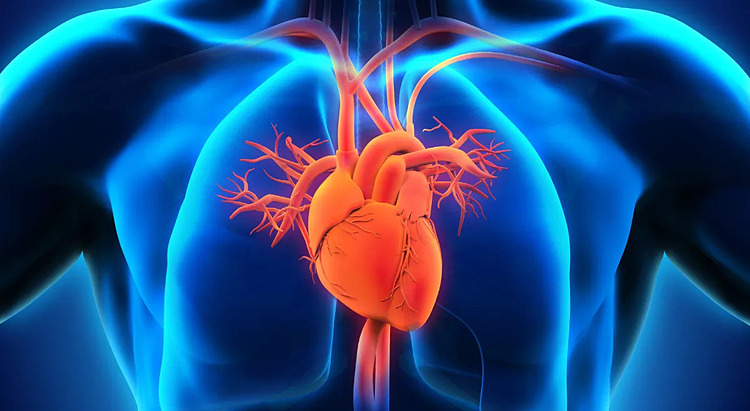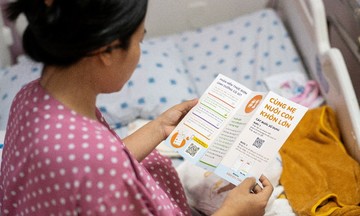Cardiac arrest occurs when the heart abruptly loses its ability to pump blood to the body, especially the brain. Without intervention within 3-5 minutes, the patient can die from lack of oxygen to the brain.
Doctor Doan Du Manh from the Vietnam Vascular Society, says that sudden cardiac arrest can occur even in seemingly healthy individuals, often due to undetected underlying conditions, genetic disorders, or difficult-to-detect electrical abnormalities.
Transient arrhythmia
This is a leading cause, particularly ventricular fibrillation or multifocal ventricular extrasystoles. This disorder doesn't leave permanent damage to the heart, so standard electrocardiograms (ECGs) and echocardiograms may not detect any abnormalities. These conditions can occur suddenly and without warning, leading to immediate cardiac arrest and respiratory arrest.
Congenital electrical heart syndromes
Certain heart ion channel disorders like Brugada syndrome, long QT syndrome, or Wolff-Parkinson-White (WPW) syndrome only manifest under specific circumstances (high fever, medication, exertion, etc.).
Several genetic conditions, especially undiagnosed ones such as long QT syndrome, which disrupts the heart's electrical system; Wolff-Parkinson-White syndrome, which causes an additional electrical pathway that can make the heart pump blood too quickly; and Marfan syndrome, a connective tissue disorder that can lead to a tear in the heart’s aorta, can all lead to cardiac arrest.
These abnormalities are sometimes difficult to detect without timely ECGs or specialized tests.
Transient myocardial ischemia
Transient myocardial ischemia, also known as a transient ischemic attack of the heart, is a temporary lack of blood flow to the heart muscle that doesn't cause permanent damage. It's linked to a temporary interruption in blood supply to the heart, often due to coronary artery spasms, temporary blockages, or reduced blood flow through the coronary arteries.
Causes include coronary artery spasms, often seen in acute coronary syndrome or Prinzmetal angina; temporary blockages due to small blood clots or plaque that temporarily obstruct blood flow; increased myocardial oxygen demand during exertion, stress, or sudden high blood pressure; and reduced oxygen supply due to low blood pressure, anemia, or cold-induced vasoconstriction.
This condition is also difficult to diagnose as symptoms often disappear quickly. While these symptoms may resemble other conditions, they can be a warning sign of dangerous heart conditions like myocardial infarction, which can cause sudden cardiac arrest.
External factors
Factors such as acute electrolyte imbalances (high/low potassium, low sodium), drug reactions, allergic shock, and small vessel strokes can also cause sudden cardiac arrest without leaving lasting damage.
Electrolytes such as calcium, sodium, and potassium are crucial for the proper functioning of chemical reactions in the body. Calcium and potassium must be balanced, located on either side of cell membranes, ready to exchange places, helping muscles contract or nerves transmit impulses. Without sufficient electrolytes, heart muscle cells cannot function, meaning the heart cannot pump blood.
 |
Illustration: Asterhospitals |
Illustration: Asterhospitals
Sudden cardiac arrest may or may not have warning signs. Symptoms include chest pain or discomfort, a squeezing, pressing, or burning sensation in the chest that can be persistent or fleeting. Patients may experience shortness of breath, dizziness, lightheadedness, brief loss of consciousness, and a rapid heartbeat.
In these situations, the "golden time" for cardiac arrest intervention, also known as the "cardiac arrest golden time," is crucial in determining survival rates and neurological recovery.
According to Dr. Manh, the optimal time for cardiac arrest intervention is within the first 4 minutes. After this period, the victim’s brain can suffer severe, irreversible damage. The patient's survival depends heavily on immediate on-site first aid.
If CPR and defibrillation (if indicated) are administered within the first 3-4 minutes, survival rates are highest and neurological damage is minimized. Brain damage begins to occur between 4-6 minutes, worsening with time. After 10 minutes, the chance of recovery with intact neurological function is very low, even if the heart can be restarted.
If someone is unconscious and not breathing, suspecting cardiac arrest, call emergency services. Ensure the victim is in a safe place and check for breathing. If the person isn't breathing and has no pulse, perform CPR by compressing the center of the sternum at least 5 cm deep at a rate of 100-120 times per minute, allowing the chest to recoil after each compression. Continue CPR until the person starts breathing or moving, or until medical personnel arrive. Chest compressions help maintain blood flow to the brain, supporting the patient until professional help arrives.
Doctors recommend seeking immediate medical attention if experiencing unusual symptoms such as chest pain, palpitations, shortness of breath, fainting, or unexplained fatigue. Early detection of arrhythmia, coronary artery stenosis, or cardiac hypertrophy can prevent tragic cases of sudden cardiac arrest.
Thuy Quynh












